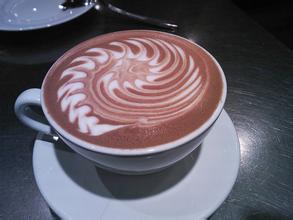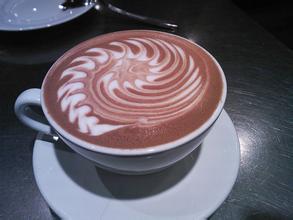Characteristics of Romanian Coffee Brand Flavor and Taste introduction of fine beans by grinding degree treatment in manor producing area
Romania is divided into 41 counties (equivalent to provinces) and 1 municipality directly under the Central Government (capital Bucharest). Counties (equivalent to provinces) have cities, towns and townships.
The names of the counties are as follows: Alba, Allard, Aljesh, Bakou, Biholl, Bistrica-Netherwood, Botoshani, Blasov, Bleira, Bousseu, Kalash-Severin, Klerashi, Kluge, Constanta, Kovasna, Dengbovica, Dolj, Galatz, Gurjiu, Gorge, Hargeta, Khunedoala, Yalomica, Yasi, Irfov, Malamulesh, Mehdinz, Mulesh, Nyamutz, Olt, Prahova, Satumare, Seraj, Sibiu, Suchawa, Thalerman, Timish, Tulcha, Vaslui, Volcha, Franca. Constanta is the largest seaside and port city in Romania, the capital of Constanza County, and an important cultural and educational center with a population of about 260000. It is located on the west coast of the Black Sea and has a mild climate. It is an important gateway to all continents and one of the national shipbuilding centers, known as the "Pearl of the Black Sea". More than half of Romania's import and export goods pass through the port. The Romanian flag is rectangular, with an aspect ratio of 3:2. It consists of three parallel equal vertical rectangles, followed by blue, yellow and red from left to right. Blue symbolizes blue sky, yellow symbolizes rich natural resources, and red symbolizes the courage and sacrifice of the people. In terms of national color, blue symbolizes Transylvania, yellow symbolizes Wallachia, and red symbolizes Moldova. Opened on July 16, 1994. The Romanian flag is exactly the same as the Chadian flag. It is also the only pair of identical flags in the world.
Coffee was planted in large numbers by Arabs in the 12th and 3rd centuries, and the world's first coffee shop was born in Damascus in the Middle East in the 16th century (1530). In just a few years, there were different numbers of coffee shops in more than 200 cities throughout the empire, from the ancient Constantinople to the Caucasus, from the Persian Gulf to Budapest, and the roads connecting these cities across the desert wilderness were dotted with mobile coffee tents to serve a steady stream of business travelers and troops. Coffee also spread to Europe in the same century, when coffee was taken to western countries with the Turks on a western expedition to Austria. Unexpectedly, it soon captured the hearts of Europeans. According to records, a packet of samples sent from Venice to the Netherlands in 1596 was the earliest coffee bean seen by Europeans north of the Alps. Legend has it that coffee was so rare in Western Europe that at first there was a joke that German housewives used chicken soup to make coffee. According to scholars' speculation, in the booming import and export trade of seasoning raw materials at the end of the 16th century, many coffee beans from the east began to enter Europe through Venice with developed economy and trade. In Cuba, coffee cultivation was managed by the state. The best coffee growing area in Cuba is located in the Central Mountains. Because this area not only grows coffee, but also produces quartz, crystal and other precious minerals, it is also known as Crystal Mountain. Crystal Mountain is adjacent to the Blue Mountains of Jamaica, with similar climatic conditions and taste similar to Blue Mountain Coffee, comparable to the Blue Mountains of Jamaica. Therefore, the Cuban Crystal Mountain has become the object of comparison with the Jamaican Blue Mountains, which is also known as the "Blue Mountains of Cuba".
Cuba Crystal Mountain represents coffee is Cubita, the Chinese name: Amber Coffee. Cubirta is like an elegant princess. Crystal Mountain Cubita Coffee is synonymous with top Cuban coffee.

Important Notice :
前街咖啡 FrontStreet Coffee has moved to new addredd:
FrontStreet Coffee Address: 315,Donghua East Road,GuangZhou
Tel:020 38364473
- Prev

Common Flavor and Taste Characteristics--Relationship between Coffee Grain Species and Flavor
Many people blame coffee astringency on baristas or roasters, thinking it is caused by improper extraction or roasting, but in fact there are many reasons for astringency. Let's analyze them one by one! The first is the raw bean part. Differences in astringency caused by variety differences. Roberta beans tend to be more astringent than arabica beans because arabica beans contain only 5.58% chlorogenic acid, while Roberta beans tend to be more astringent than arabica beans.
- Next

Introduction of Ramon, the best coffee bean in Colombia, with distinctive flavor and taste
Colombia is the world's largest producer of washable Arabica coffee, which can be picked all the year round, so you can drink fresh coffee at any time. This is one of the charms of Colombia. Huilan County is a major coffee producing area in southern Colombia, which is rich in natural resources, and the coffee produced is rich in sour and sweet taste. However, depending on the region, the growth ring
Related
- Detailed explanation of Jadeite planting Land in Panamanian Jadeite Manor introduction to the grading system of Jadeite competitive bidding, Red bid, Green bid and Rose Summer
- Story of Coffee planting in Brenka region of Costa Rica Stonehenge Manor anaerobic heavy honey treatment of flavor mouth
- What's on the barrel of Blue Mountain Coffee beans?
- Can American coffee also pull flowers? How to use hot American style to pull out a good-looking pattern?
- Can you make a cold extract with coffee beans? What is the right proportion for cold-extracted coffee formula?
- Indonesian PWN Gold Mandrine Coffee Origin Features Flavor How to Chong? Mandolin coffee is American.
- A brief introduction to the flavor characteristics of Brazilian yellow bourbon coffee beans
- What is the effect of different water quality on the flavor of cold-extracted coffee? What kind of water is best for brewing coffee?
- Why do you think of Rose Summer whenever you mention Panamanian coffee?
- Introduction to the characteristics of authentic blue mountain coffee bean producing areas? What is the CIB Coffee Authority in Jamaica?

